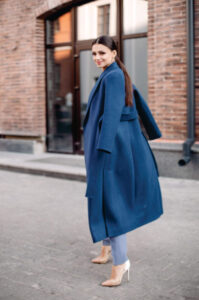The colors you wear impact emotions and shape perceptions. Color psychology influences your outfit choices by boosting confidence and setting the mood. Whether you aim to radiate authority, feel more approachable, or exude energy, color plays a vital role. Your wardrobe serves as a reflection of your personality, and strategic color choices enhance this expression. By understanding how colors affect emotions, you can make intentional fashion decisions that leave a lasting impression.
1. The Influence of Color in Fashion
Colors do more than decorate—they communicate unspoken messages. The hues you choose affect emotions, alter self-perception, and shape how others see you. Bright colors generate excitement, while muted tones project calmness. Some shades exude warmth, while others convey strength or mystery. Understanding how color psychology influences your outfit choices allows you to dress with intention and create an impact. By thoughtfully selecting colors, you can highlight your best features and express different moods.
2. Red: Power, Passion, and Energy
Red is associated with confidence, passion, and intensity. Wearing red makes you stand out and commands attention. This bold color is ideal for high-energy environments like social events, networking, or leadership roles. A red dress or blazer exudes strength, while subtle red accents, such as a handbag or shoes, create a striking effect without overpowering the look. However, too much red can feel aggressive, so balance it with softer tones. Pairing red with neutral colors like white or beige makes it more wearable for different occasions.
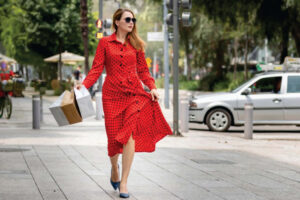
3. Blue: Trust, Serenity, and Professionalism
Blue is a calming color linked to stability and reliability. It’s frequently worn in professional settings because it promotes trust and confidence. Lighter blues evoke tranquility, while deeper navy conveys authority. Wearing blue in work environments fosters a sense of credibility. Adding complementary hues like gray or white refines the look and keeps it sophisticated. Soft pastels enhance approachability, making blue a versatile color for both formal and casual wear. Blue also works well in business suits, as it projects a sense of responsibility and calmness.
4. Yellow: Happiness, Optimism, and Creativity
Yellow symbolizes energy and positivity. Wearing yellow can lift your mood and make you appear friendly and approachable. It’s perfect for creative settings and social gatherings. While bright yellow makes a bold statement, softer shades like mustard or pastel yellow offer a more refined touch. Since yellow can be overpowering, it works best when paired with neutral colors like beige, gray, or navy. Accessories in yellow, such as a scarf or belt, add warmth without overwhelming the outfit. A pop of yellow can make a simple look feel fresh and lively.

5. Green: Harmony, Renewal, and Growth
Green is associated with nature, balance, and stability. Wearing green can create a sense of renewal and calmness. Dark greens exude sophistication and depth, making them great for business settings. Lighter greens, such as sage or mint, offer a fresh and relaxed appearance. Green pairs well with earthy tones, soft neutrals, and metallics. It’s a color that feels grounding and is perfect for casual, professional, and elegant outfits alike. Olive green, in particular, is a great shade for military-inspired styles and structured fashion pieces.
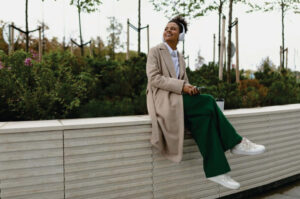
6. Black: Mystery, Elegance, and Authority
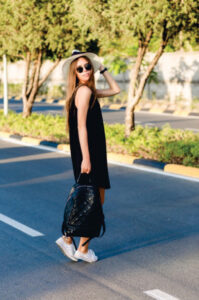
Black is timeless and always in style. It’s a go-to color for formal occasions, business attire, and fashion-forward looks. Wearing black gives off an air of confidence and sophistication. A well-fitted black ensemble creates a sleek, polished effect. However, too much black can feel distant or unapproachable, so incorporating metallic jewelry or a pop of color helps soften the look. Pairing black with lighter fabrics or patterns adds depth and interest. For evening wear, black exudes effortless elegance and a sense of power.
7. White: Purity, Simplicity, and Freshness
White conveys clarity, cleanliness, and a minimalist aesthetic. It offers a crisp, polished look that works for both casual and professional attire. Wearing all white creates a bold yet sophisticated statement. Layering white with other neutral shades prevents the outfit from appearing too stark. White accessories or footwear help freshen up darker outfits, creating balance and contrast. Monochrome white outfits, when styled well, can project luxury and refined simplicity.
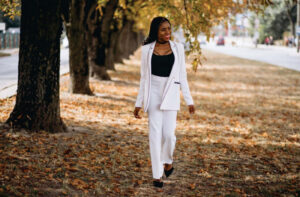
8. Purple: Luxury, Creativity, and Individuality
Purple has long been associated with royalty, imagination, and sophistication. It combines the energy of red with the calmness of blue, making it a balanced and dynamic color. Light purple hues create a soft, elegant look, while deep purples evoke drama and richness. Wearing purple can help convey a unique and artistic personality. It pairs beautifully with metallics and neutral tones, adding flair to any outfit. Purple works particularly well for statement pieces, adding an element of mystique and refinement.
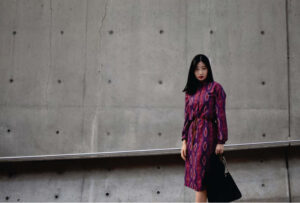
9. Neutral Tones: Timeless, Adaptable, and Chic
Neutral shades like beige, gray, and brown serve as wardrobe essentials. They provide a versatile foundation for styling, as they pair seamlessly with bold or muted colors. Beige offers warmth, gray symbolizes balance, and brown conveys reliability. Layering neutral tones creates depth while maintaining sophistication. Whether for work, social gatherings, or casual wear, neutrals remain effortlessly stylish. Investing in high-quality neutral clothing ensures versatility and long-term wearability.

10. Choosing Colors That Enhance Your Look
Understanding how color psychology influences your outfit choices helps you refine your wardrobe. Your ideal colors should complement your skin tone, hair color, and personal style. Experiment with different shades to determine what makes you feel the most confident. Some colors may enhance your natural features, while others create contrast for a bold statement. Dressing with color awareness ensures you always feel empowered in what you wear. Personalizing your color choices allows you to highlight your individuality while staying true to your fashion sense.
11. Simple Ways to Add More Color to Your Wardrobe
Introducing color into your wardrobe doesn’t require a complete overhaul. Start with accessories like handbags, scarves, or statement jewelry in your favorite hues. Add colorful shoes or belts to neutral outfits for a subtle pop. Layering different shades of the same color creates depth while keeping your outfit cohesive. Patterns that mix various tones add visual interest and personality without feeling overwhelming. Small color changes, such as switching from black to navy or adding pastels, can make a big difference in your overall look.
Colors influence emotions, enhance confidence, and shape first impressions. By understanding how color psychology influences your outfit choices, you can dress with purpose and express yourself authentically. Whether you want to feel powerful, relaxed, or creative, your wardrobe can help communicate that message. Thoughtful color choices allow you to align your style with your personality and desired impact. Dressing with confidence means embracing colors that make you feel your best.
For expert insights on color psychology in fashion, check out this guide from Vogue.
What colors make you feel your best? Share your thoughts on how color influences your personal style!
Dressing for Your Body Type: Flattering Outfits for Every Shape
Renting Clothing for Special Occasions: Is It Worth It?

I’m Victoria, the creator behind Eva My Balance. Passionate about beauty, wellness, sustainable living, and mindful self-care. My mission is to inspire you to live consciously and beautifully—inside and out.

